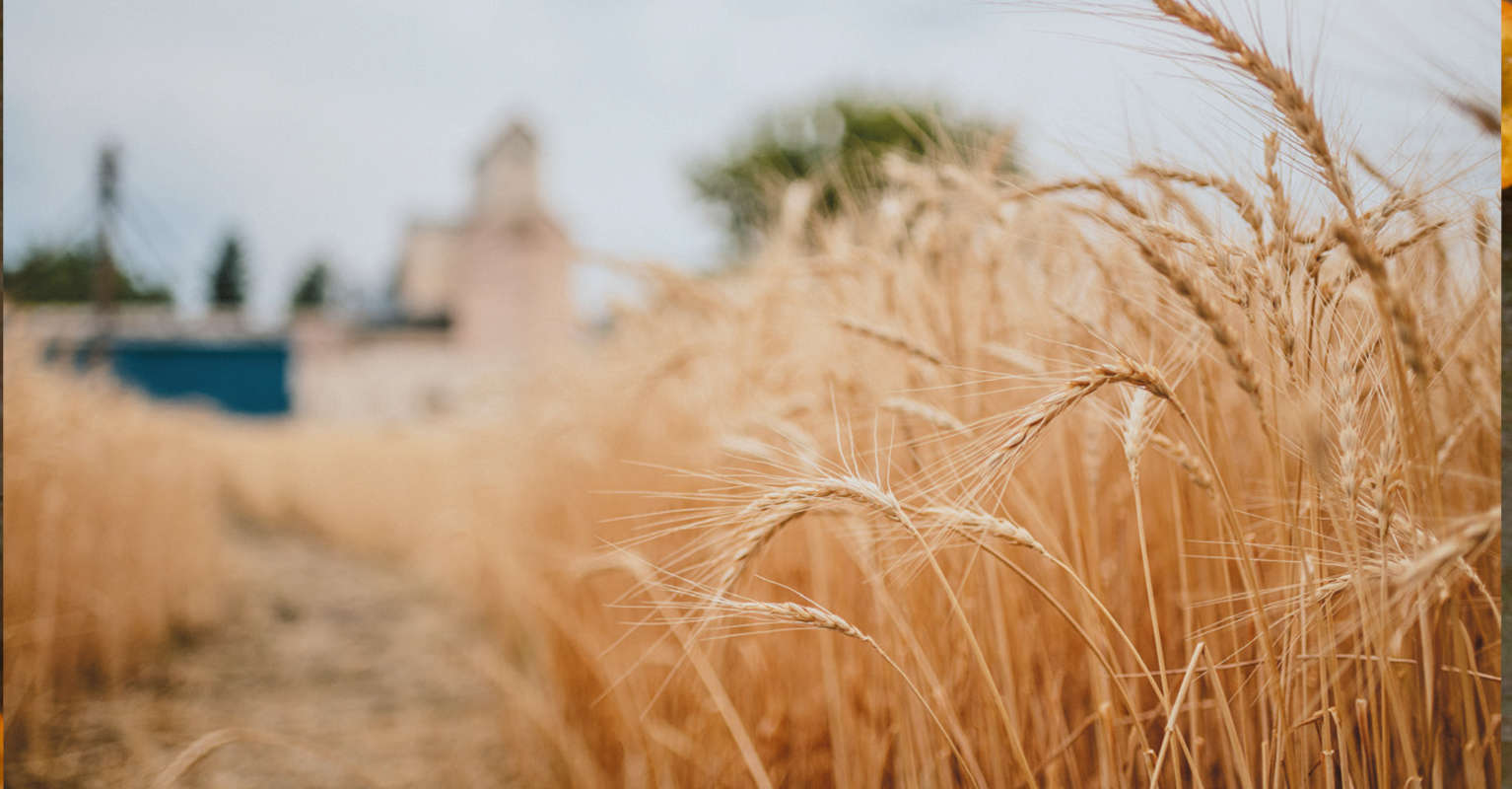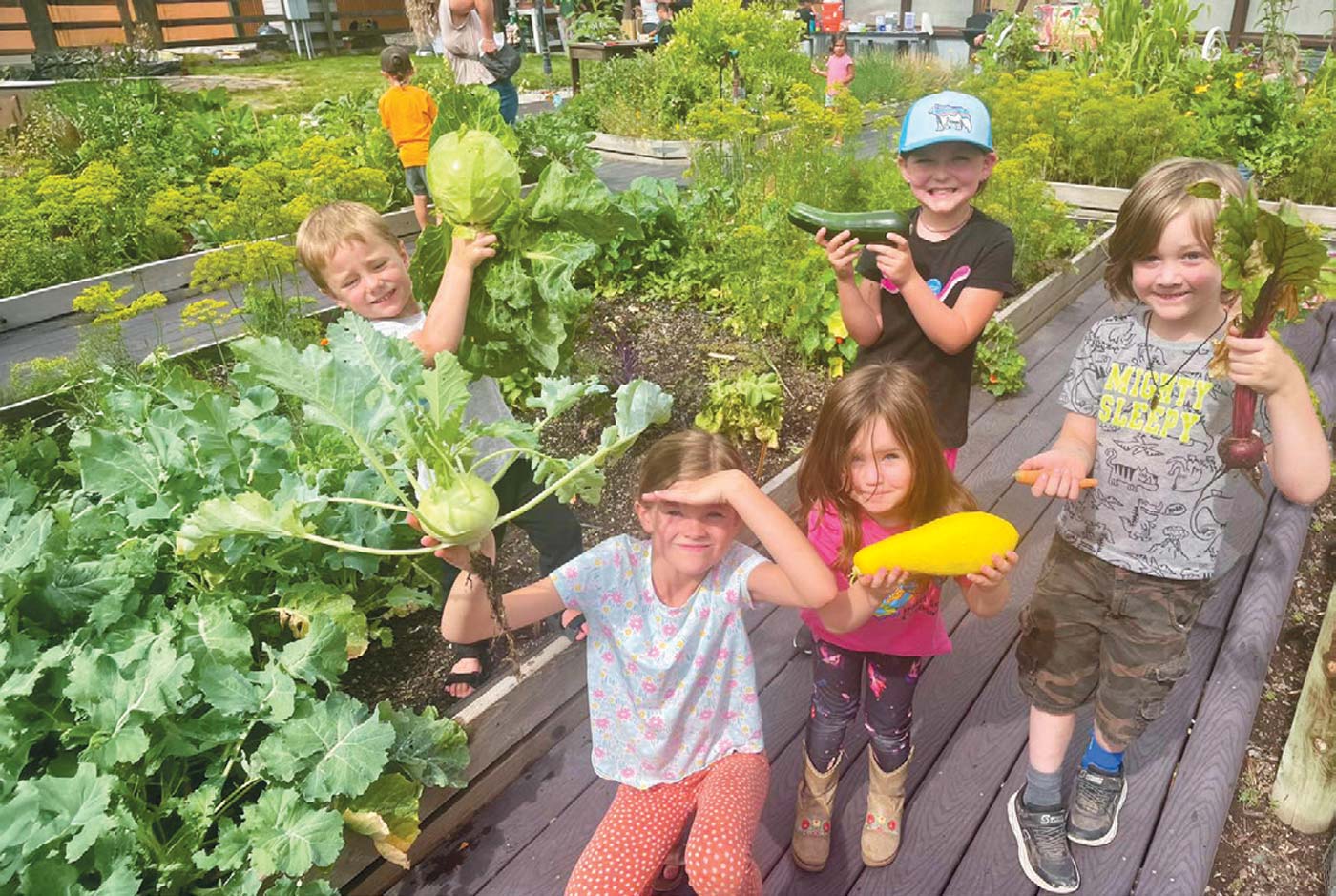Lauren Reich tries to use as little fossil fuel as possible and doesn’t heat her tunnels through the coldest part of the winter. Instead, she begins heating them in late February, which gives her just enough of a jump on the season.
Extending the Growing Season with Greenhouses
Lauren Reich strolls the narrow corridor between rows of produce in one of her greenhouse tunnels, examining leaves on her crop. It takes some careful footwork not to tread on any plants, but Reich maneuvers with the ease of someone who has spent a lot of time gardening in small spaces. This tunnel is one of three that she and her husband, Charley Graham, assembled on the 11-acre property to extend their growing season and combat the harsh and variable climate of Montana.
“We recently moved here from an intensely cultivated quarter-acre in the suburbs,” Reich says. “You can grow a surprising amount of food on a quarter-acre, but the move means I am no longer limited by space—now I can really go for it.”
And going for it, she is. Here, along the Gallatin River, Reich grows everything from cherry tomatoes to lettuce and root vegetables, supplying nearly all the produce for Little Star Diner, the restaurant she and Graham opened in Bozeman in 2017.
As head chef at the diner, Graham builds his menu around the summer’s yield, making changes according to what and how much is produced on the farm. Even at the old location, Reich managed to provide a good amount of Little Star’s produce, but now, with the additional space and accompanying greenhouse tunnels, the sky’s the limit.
Since the 1700s greenhouses have been utilized in North America to grow foods and medicinal plants that would be impossible or difficult to produce in some regions of the country. Today, many types of greenhouses exist, including both temporary and permanent structures, ranging in size, shape, and material.
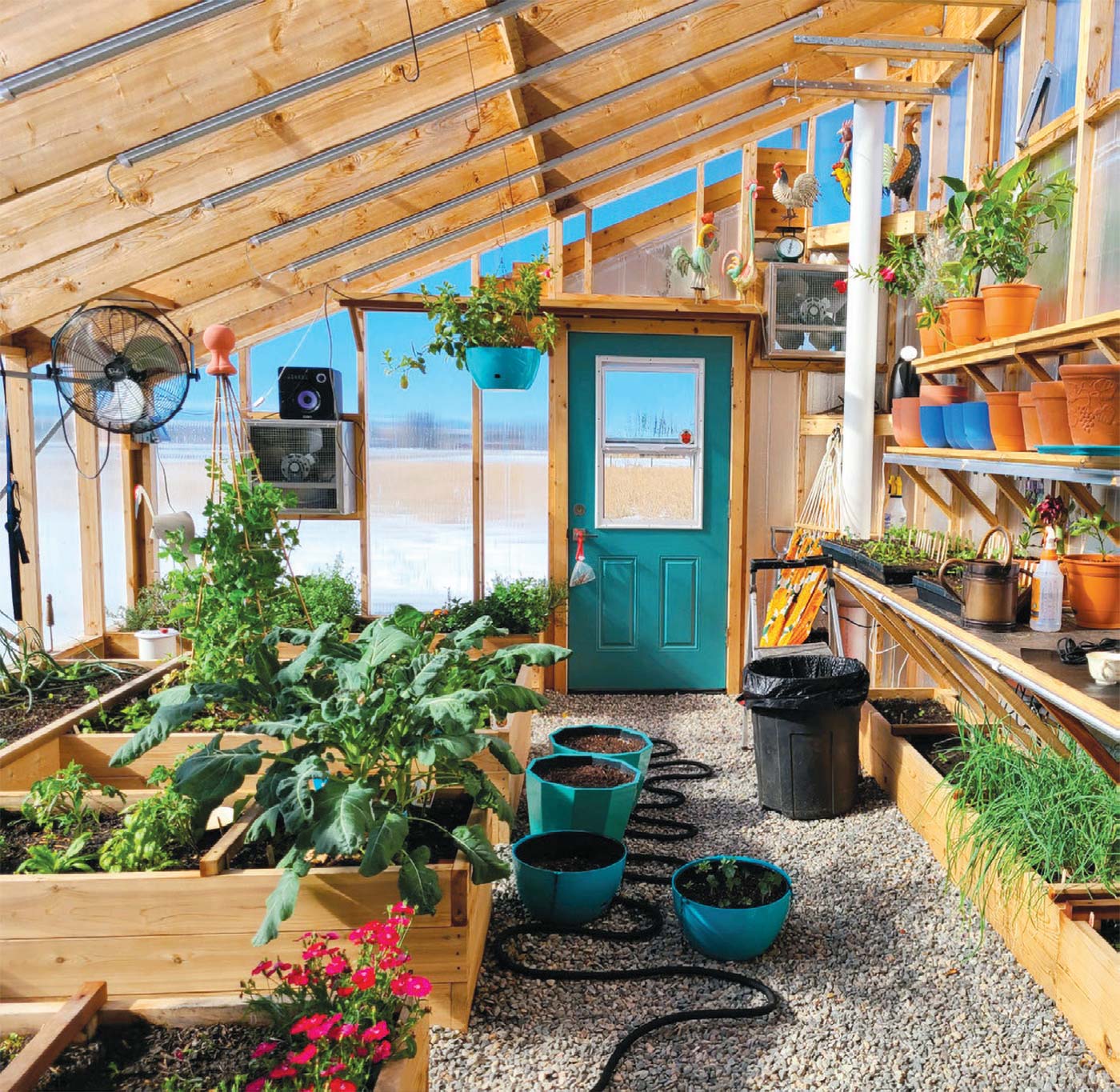
A horticulturist for Montana State University Extension, Abiya Saeed teaches workshops on greenhouses, and she has noticed a growing interest in home greenhouses to make the most of the short growing season.
“Greenhouses are one of the top ten topics we get requested for workshops,” she says. “They are a way to regulate the outside environment. People use them to grow fruits, veggies, specialty plants, and so much more.”
Saeed recommends that people take their time thinking about specific goals before investing in a home greenhouse. “One should consider whether it will be a temporary or permanent structure and if it’s for year-round growing or simply to extend the growing season.”
Saeed explains that year-round structures will need heating, ventilation, and sometimes supplemental lighting. “But even season-extension structures like hoop houses, cold frames, and hotbeds can add a few weeks or more at the beginning and end of each season, which opens up the possibilities of what you can grow.”
Greenhouse design and systems vary widely and range in complexity from simple, clear structures using passive heating to elaborate, fully heated, ventilated structures. Framing materials usually consist of galvanized steel, aluminum, or rot-resistant wood. The glazing on the exterior is most often glass, polycarbonate plastic, or greenhouse-specific polyethylene film. Locally, there are many options to choose from, whether you’re interested in the DIY route or contracting a company to build one for you.
“In the peak summer months of Montana, make sure your plants are getting plenty of water,” says Saeed. “You need to ensure that your greenhouses also have plenty of ventilation during these hot months. You can consider using shade fabrics to protect your more shade-loving or light-sensitive plants.”
Saeed, who has done extensive research on pollinators, adds that it’s important to make sure these insects can access the greenhouse plants when they are flowering. “You want to give pollinators as much open access to the plants as you can by opening doors, windows, and sides of your greenhouse.
You can also plant pollinator-friendly plants around the perimeter as attractants—but if you use products on your plants, make sure to avoid any that could harm pollinators.” Certainly, as more communities move to create self-reliant food economies and build connections between producers and consumers, there is increased demand for farm-to-table produce and dining options like Little Star.
Back in Gallatin Gateway, Reich’s greenhouse tunnels have allowed her to spread out the growing season and utilize micro-climates on the farm, especially for the go-to crops that are most used in the restaurant.
“I now start a round of snap peas and carrots in the heated tunnel, and when those are mostly done, the ones in the unheated tunnel will be ready for harvest, lastly followed by the ones I’ve grown outdoors,” says Reich.
The three tunnels provide crucial protection from the elements and play an essential role in Reich’s ability to grow enough produce to sustain Little Star’s demand practically year-round.
“I realized midsummer last year that we hadn’t bought produce for the restaurant from anyone else,” Reich says. “It was a pretty cool feeling.”
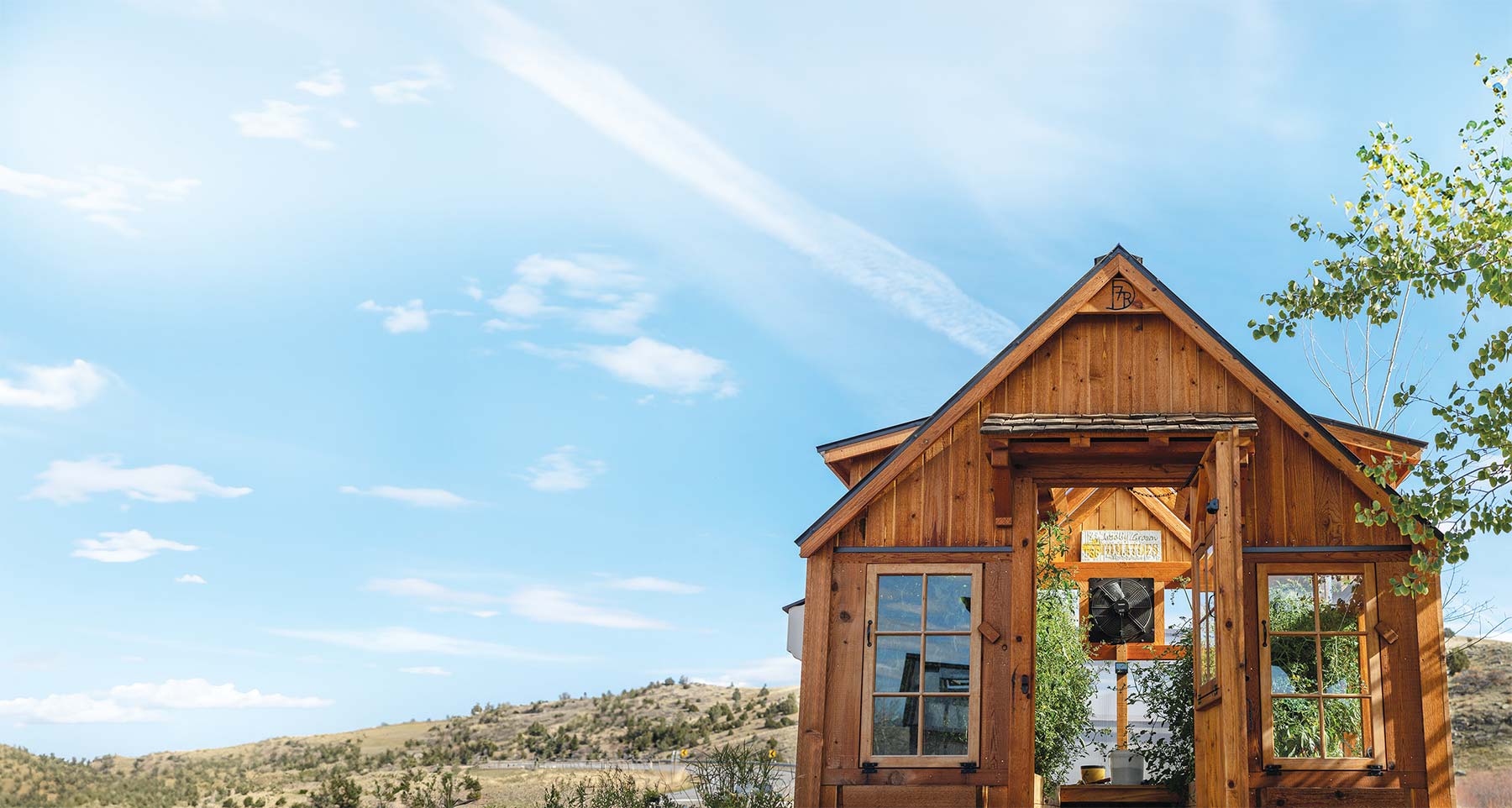
FRONTIER RUSTIC DESIGNS
Frontier Rustic Designs in Norris, Montana, offers fully customizable built-and-delivered greenhouses to properties throughout the Mountain West.
After 20 years building the business, founders Phil and Lisa Nye moved on to a new adventure in 2019, passing the torch to longtime employees and brothers Joe and Jesse Esh. Jesse and his wife, Mary Beth, moved full-time to Montana in 2020, and Joe and his wife, Martha, made the move two years later, solidifying the transition of the business to a new generation.
The Esh family now builds around 120 greenhouses a year. They offer delivery and installation for homes within ten hours of their Norris workshop. The brothers grew up on a self-sustained dairy farm, and Jesse started working construction when he was 17. His wife, Mary Beth, has experience in sales and bookkeeping. The two run the day-to-day of the business with their toddler in tow. “This is really a family-owned and -run business,” says Mary Beth.
The Esh family is proud to carry on the legacy of Frontier Rustic Designs, continuing to build structures that embody the strength and resilience necessary to endure the elements of southwest Montana.
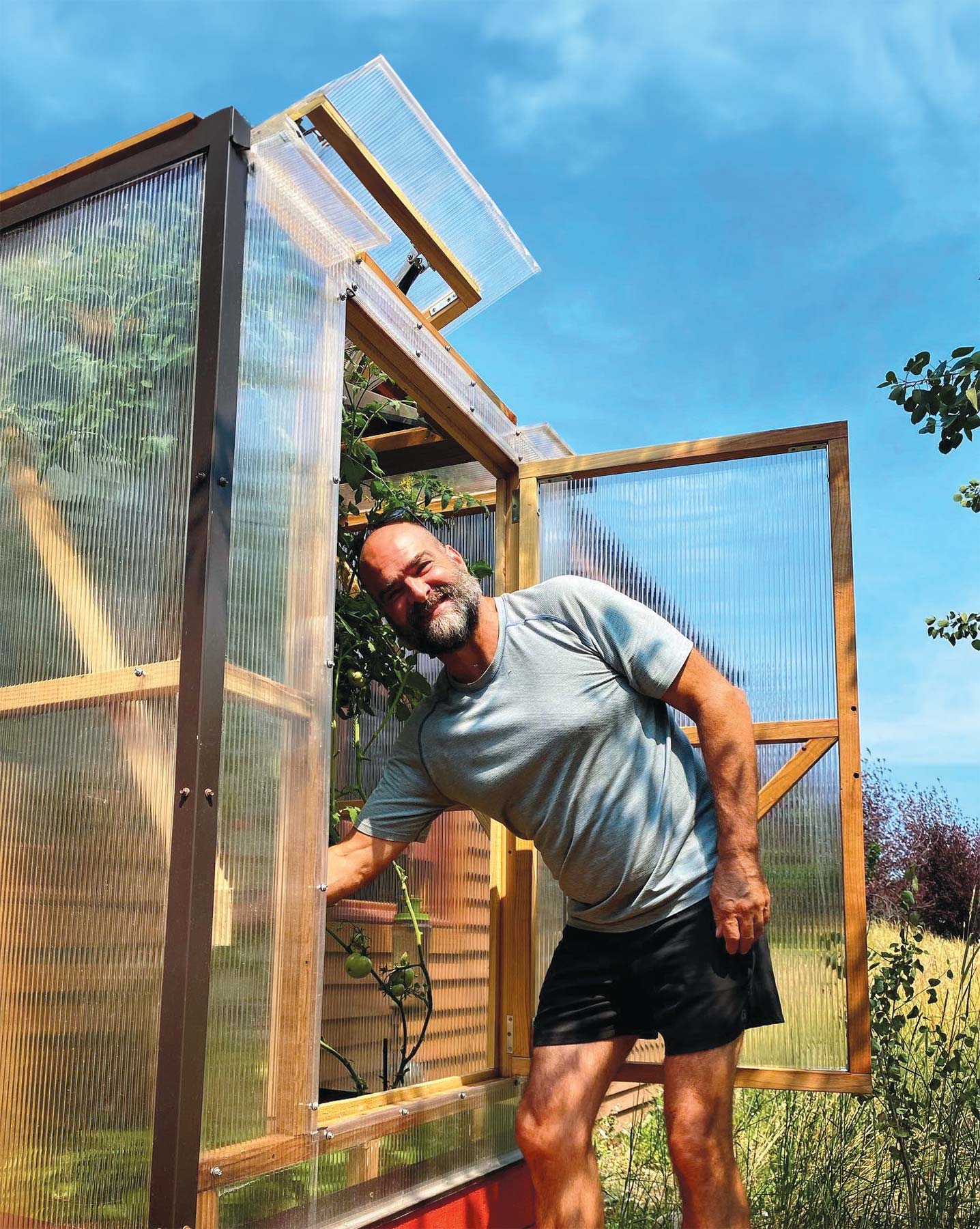
ALPINE GREENHOUSES
Dave McCarson grew up in North Carolina, where he cared for his family’s half-acre garden. He carried this experience with him when he started the first organic farm in Bozeman, Alpine Organic Farm, where he designed and built four greenhouses on two acres of land and learned how to extend the growing season in Montana’s cold climate. Now, he builds custom, high-quality greenhouses for customers through his business, Alpine Greenhouses.
McCarson’s mission is to enable the public to grow their own food for their families, helping society move away from consuming so many processed goods.
Alpine Greenhouses provides an alternative to conventional greenhouses by using passive solar to heat the space: While conventional structures allow light to enter, the solar heat is not stored, making them less efficient. In contrast, McCarson’s passive solar greenhouses store the sun’s heat in the floor, which acts as a heat sink to help stabilize the interior temperature. “Our greenhouse structures harness the earth’s and sun’s heat, saving 80 percent of heating costs compared to conventional greenhouses,” McCarson says.
“A lot of my customers have young children,” he adds. “The smile on those kids’ faces when they eat fresh food is the most gratifying part of the business for me.”



